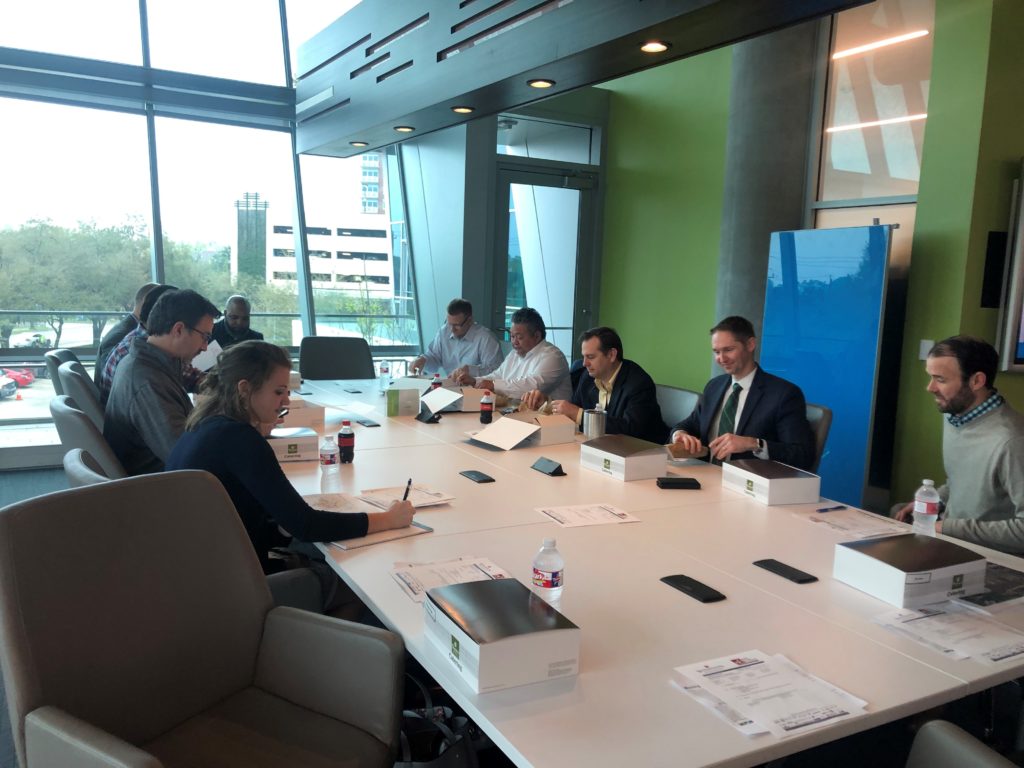The West Houston Association’s Quality Planned Development Committee met Thursday the 28th at MetroNational’s Treehouse office space to discuss the future of parking lots. The committee was joined by MetroNational’s Director of Planning, Marlene Gafrick, Vice President of Design and Construction, Jason Tedrick, and Walter P Moore’s Senior Associate, Bryan Brown. The group discussed that as a whole, Houston is said to be over-parked. When you consider an area that contains housing, businesses, educational facilities and food in close proximity, the idea of shared parking spaces is a topic of conversation. With this in mind, we are now seeing a trend toward large parking and paved areas being converted to parking garages or other multi-use facilities to accommodate more density in a smaller area.

In some places there has been discussion on the concept of converting certain parking structures even further to have automated parking lift systems. This would mean that a parking garage that would originally have held 438 spaces (assuming 3-bay ; 60 ft x 240 ft) can now place the same number of cars in half the space.
MetroNational’s newest project, the McAdams, is a great example of the notion that parking lots are decreasing to accommodate the densification and population growth being seen in the region. The McAdams is a newly constructed multi-family housing property that converted what were previously Memorial City Mall’s surplus parking spots into an 8 story, 333 unit property. The move to convert the spots was made after an in-depth analysis showed the parking spaces were not being utilized by mall shoppers and could better serve as multi-use space. Even with the construction of the McAdams the Memorial City Mall still has surplus parking.
The committee discussed the possibility of the City enforcing parking maximums, however, this may become more difficult in areas where the parking use is typically residential and not shared. The hopes are that with a push to make public transportation more accessible and the creation of connections from business nodes to residential nodes fewer people will be driving and parking their own cars to get from place to place. This combined with new efforts to densify parking and create more structures like parking garages will likely reduce the level of impervious cover and even gas emissions in the region.
